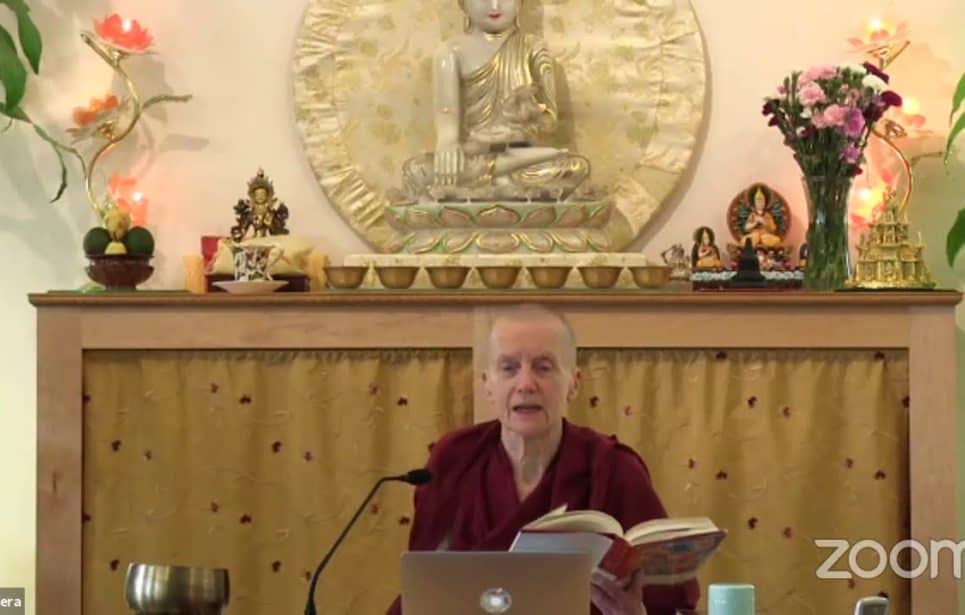Buddhist tenet systems: Question and answers part 4

Part of a series of talks on the key points of the four main Buddhist tenet systems.
- The interdependence of cause and effect
- Spiritual disposition and Buddha nature
- How are bodhisattvas able to return for the benefit of sentient beings?
- Does emptiness have parts?
- Does each moment of an object have a separate emptiness?
- What does it mean that the 12 links of dependent origination can be cut at the 8th and 9th?
- The meaning of being merely imputed
- Is the clear light mind inherently existent?
Venerable Sangye Khadro
California-born, Venerable Sangye Khadro ordained as a Buddhist nun at Kopan Monastery in 1974 and is a longtime friend and colleague of Abbey founder Venerable Thubten Chodron. She took bhikshuni (full) ordination in 1988. While studying at Nalanda Monastery in France in the 1980s, she helped to start the Dorje Pamo Nunnery, along with Venerable Chodron. Venerable Sangye Khadro has studied with many Buddhist masters including Lama Zopa Rinpoche, Lama Yeshe, His Holiness the Dalai Lama, Geshe Ngawang Dhargyey, and Khensur Jampa Tegchok. At her teachers’ request, she began teaching in 1980 and has since taught in countries around the world, occasionally taking time off for personal retreats. She served as resident teacher in Buddha House, Australia, Amitabha Buddhist Centre in Singapore, and the FPMT centre in Denmark. From 2008-2015, she followed the Masters Program at the Lama Tsong Khapa Institute in Italy. Venerable has authored a number books found here, including the best-selling How to Meditate. She has taught at Sravasti Abbey since 2017 and is now a full-time resident.


